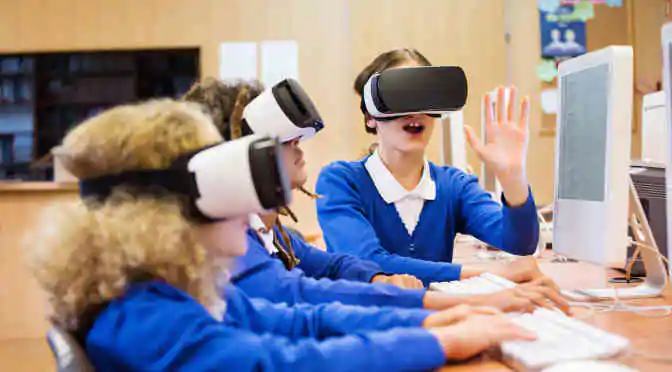Although the concept of Augmented Reality (AR) has existed for roughly two decades, the technology has only just begun its foray into the mainstream by way of immersive mobile and desktop experiences. Not surprisingly, much of AR technology’s impact has been seen in the entertainment and marketing industry. Today, one area that is sure to benefit massively from AR technology is the global education sector. Major educational institutions are already embracing virtual reality (VR) and augmented reality in education and training courses, thereby delivering a new learning experience for students.
While basic computer skills have been a core addendum in the curriculum for many years, the inclusion of cutting-edge AR technology ramps up the overall experience to a whole new level. The surefooted emergence of AR applications in the education sector will become the standard for next generation computing and act as a smart tool for learning. In this light, the following popular trends in augmented reality are creating explorative opportunities in the global education sector.
1) Expert learning with AR textbooks
One of the most obvious ways that AR will influence education is by enhancing learning materials for students, thereby opening up a whole new industry to cater to this demand. AR textbooks have been a speculation for quite a few years, and with current technology, it won’t be long before conventional paper and writing instruments are swapped for a more digitized approach.
The technology is being implemented by a sizable number of institutions with the obvious motto to gain precision in the teaching and learning process. The best example for this comes from a university in Thailand wherein the launch of AR geology textbooks has allowed students to learn about various layers of the earth in a novel and interactive format.
2) AR gaming is transforming the way students absorb information
AR technology is reshaping many industries, thanks to its cutting-edge innovations and versatility. The proof of this swift progress can be seen in the gaming industry, wherein AR technology has allowed developers to create games that combine events that take place in the real world and augment it with virtual information. Games have made learning fun, interactive and intuitive, thereby proving to be well, a game changer in the global education sector.
3) Student-centric learning environments
In an AR experience, the students are completely immersed in the smart online education formats including videos, audios or games, enabling them to see the educational content in the space around them. Using AR technology, students can interact with the educational content by moving about and changing perspectives. The ease of interacting within AR-based experiences is one of the main reasons for teachers to bring virtual educational experiences into the classroom. Consequently, teaching and learning will become more effective, engaging, and interactive with augmented reality technology.
Need more information on the ever-evolving AR and VR industry? Sample the latest information, as part of the comprehensive market research report from Technavio, that details the growing role of AR in the global education sector. FREE links are provided herein.



